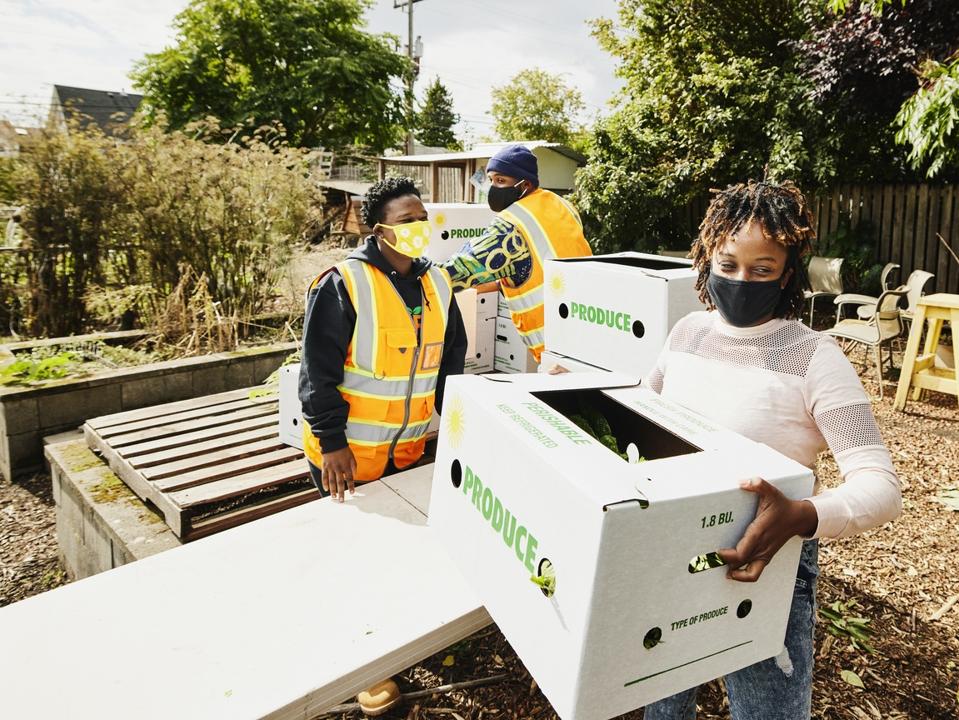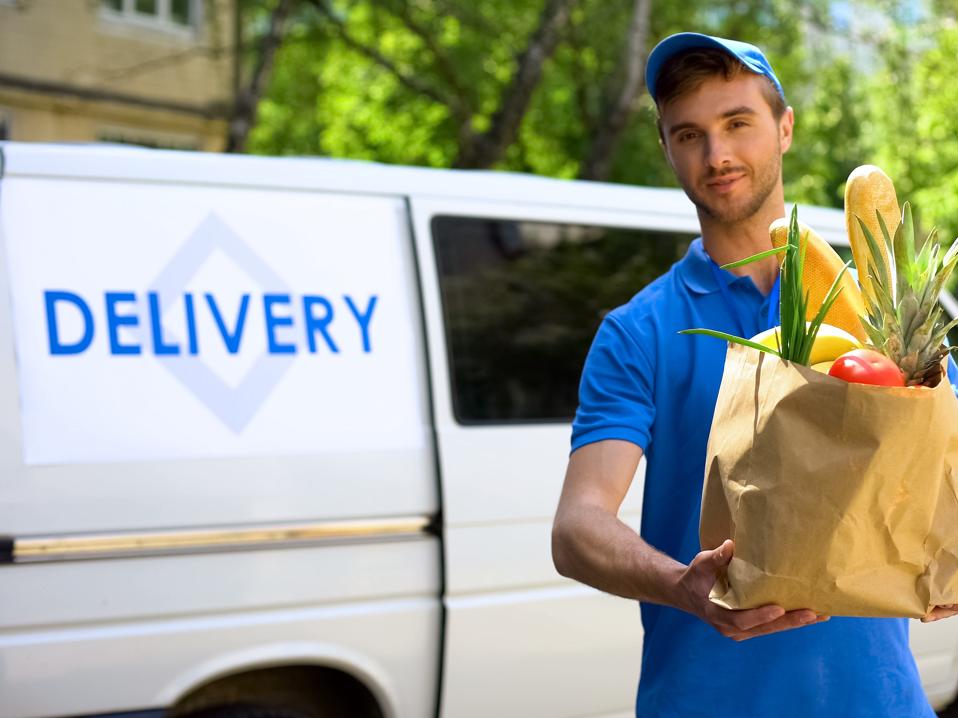Do you have an idea what your foodprint is? If you have anything in common with the average U.S. consumer, chances are you have wondered what the environmental impact is of your food choices and behaviors, and are interested in adopting more sustainable eating habits.
According to the Tastewise “2025’s Most Disruptive Food & Beverage Trends” report, consumer interest in sustainable food and beverages has grown by 18.4% over the past two years, while Sodexo’s Sustainable Food Barometer reveals that 72% of Americans have “an urgent need for a more sustainable way of eating.”
Tastewise data reveals increasing interest in carbon labeling and soil health, as well as growing demand for transparency around the environmental impact of food— with 55% of consumers conveying a willingness to pay a premium for truly sustainable brands.
“Consumers are more concerned about the environment,” said Tom Vierhile, VP of strategic insights for Innova Market Insights, during his presentation at this year’s Natural Products Expo West. “They’re cognizant their purchases make a difference, and they want to be doing the right thing, and companies also want to do the right thing.”
With the food system accounting for over 30% of global greenhouse gas emissions, reducing carbon emissions is a shared goal that everyone in the food chain should rally around.
From grocery shopping and cooking at home to farmers markets and dining at uber swanky restaurants, here are the top five tips and trends for eating more sustainably.
Farm To Home: Community Supported Agriculture
Eating local, seasonal food helps to promote both environmental sustainability and stronger connections between consumers and their local food systems. Community Supported Agriculture (CSA) programs connect consumers directly with local farms through a subscription-based model, providing regular deliveries of fresh, seasonal produce. CSAs help reduce environmental impact by minimizing transportation emissions, encouraging seasonal eating, using less packaging, and supporting farms with sustainable practices. The United States Department of Agriculture’s Local Food Directory and LocalHarvest are excellent resources for connecting consumers with local farmers, and provide directories for CSAs, farmer’s markets, agri-tourism activities, and food hubs (intermediaries that manage the aggregation, distribution, and marketing of locally sourced food products). LocalHarvest also offers a calendar of local food-related events, including farm tours, markets, and CSA sign-ups, and allows consumers to purchase directly from farmers through their platform.
Community Supported Agriculture (CSA) programs experienced a surge during the pandemic as consumers … [+]
Casual Dining: Restaurants That Walk the Walk
When dining out, it’s important to support restaurants that truly prioritize sustainability, but how can you spot the difference between genuine efforts and greenwashing? Certifications and memberships make it easier. Some sustainable restaurants have earned certifications such as Green Restaurant status, that highlight their efforts to source responsibly, cut down on packaging and food waste, conserve water, and adopt eco-friendly practices. The Green Restaurant Certification rigorously evaluates these efforts and provides a verified database of certified establishments. Zero Foodprint is another trusted resource, and provides a directory of restaurant members that contribute a portion of each sale to regenerative agriculture projects. A number of apps can also be used to find more sustainable dining options. For example, Happy Cow, the world’s largest vegan community and food map, helps users to locate user-reviewed vegan dining establishments in their area.
Chirashi bowl during grand opening event at Bamboo Sushi, an environmentally sustainable restaurant … [+]
Luxury Dining: Michelin Green Star
The coveted Michelin Green Star rating, launched in 2020, is a prestigious recognition awarded by the Michelin Guide to restaurants that demonstrate exceptional commitment to sustainability. This rating highlights establishments that go above and beyond in their environmental practices and is based on criteria, such as the origin and use of seasonal ingredients, their environmental footprint, food waste and recycling practices, resource management, and how effectively they communicate their sustainable approach to diners. The Green Star is designed to recognize chefs and restaurants that prioritize sustainable gastronomy while maintaining high culinary standards, encouraging more eco-friendly practices in the fine dining world. There are currently only thirty restaurants in the United States— out of more than 500 restaurants globally— that have managed to earn the coveted Michelin Green Star.
Heirloom tomatoes, palisade peach tartine with Buratta cheese on grilled ciabatta bread at the … [+]
Change Your Diet: Dietary Substitutions
A recent study found that if Americans swapped high-carbon foods like beef for lower-carbon options like chicken, or ate plant-based proteins— legumes, grains, and vegetables— in lieu of animal-based products, the country could slash its carbon footprint by over 35% while improving dietary quality. There are a number of smart phone apps that can help users to determine a food item’s environmental impact and make more environmentally friendly substitutions. Open Food Facts lets users scan barcodes to obtain a food’s A-to-E “Eco-Score” which is determined using environmental factors, such as production methods, ingredient origins, and packaging sustainability. Reewild, a UK-based app, provides detailed foodprint data, including on some U.S. brands, while the EWG Healthy Living App offers Food Scores for over 120,000 food and personal care items, ranking them on criteria such as pesticides, additives, and contaminants. EWG also publishes an annual guide to pesticides in produce.
Social conversations about meat alternatives have increased by almost 30% over the past two years, … [+]
Grocery Shopping: Opt for Delivery
A study in journal, Environmental Science and Technology found that grocery delivery services can slash emissions by up to 65% compared to in-store shopping followed by driving home in a gas-powered car. Imperfect Foods and Misfits Market are two online platforms tackling food waste by delivering sustainable, affordable groceries— many of which are perfectly good produce that don’t quite meet the visual requirements of traditional retailers. Customers can sign up for weekly or flexible deliveries, customize their orders, and reduce emissions by receiving groceries on location-based delivery days. Thrive Market, another option, offers a membership-based, carbon-neutral delivery service with discounts of up to 30% on organic, non-GMO groceries and eco-friendly products like skincare and supplements.
A recent study found that grocery delivery services can slash emissions by up to 65% compared to … [+]
That’s Not All
Eating sustainably requires being thoughtful about food choices and practices to minimize environmental impact at every stage of the food chain.
This can be achieved by growing your own food, composting kitchen scraps, and embracing small but impactful habits like reducing plastic use with reusable bags, containers, and eco-friendly packaging options such as beeswax wraps or glass jars. Buying groceries in bulk also cuts down on excessive packaging waste.
Reducing food waste— a significant contributor to greenhouse gases— is essential. In the U.S., 38% of all food goes unsold or uneaten, and each year this waste emits an equivalent amount of greenhouse gases to the annual CO2 emissions of 42 coal-fired power plants. Simple strategies like meal planning, proper food storage, getting creative with leftovers and using apps like Too Good To Go and Food Rescue US can help both consumers and businesses rescue surplus food before it goes to waste.
Certifications and labels are also crucial when shopping sustainably; look for USDA Organic, Fair Trade, Marine Stewardship Council (MSC) for sustainable seafood, Rainforest Alliance, Regenerative Organic Certified and The Carbon Trust’s Route to Net Zero Standard to ensure that brands and products meet rigorous sustainability standards.
Taking these steps, along with educating yourself through resources like foodprint.org, can significantly reduce the environmental impact of your diet and make a meaningful difference in how you consume food.





